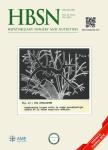STARD1:a new rising StAR in cholesterol-mediated hepatocarcinogenesis
作者机构:Leeds Institute of Medical Research at St.James’Faculty of Medicine and HealthUniversity of LeedsSt.James’University HospitalLeedsUK Centre for Genome Engineering and MaintenanceDepartment of Life SciencesCollege of HealthMedicine and Life SciencesBrunel University LondonUxbridgeUK Division of Gastroenterology and HepatologyMedical University of South CarolinaCharlestonSCUSA Section of GastroenterologyRalph H.Johnson Veterans Affairs Medical CenterCharlestonSCUSA Department of PhysiologyFaculty of Medicine and NursingUniversity of the Basque CountryUniversidad del Pais Vasco/Euskal Herriko Unibertsitatea(UPV/EHU)LeioaSpain
出 版 物:《Hepatobiliary Surgery and Nutrition》 (肝胆外科与营养(英文))
年 卷 期:2021年第10卷第6期
页 面:910-912页
核心收录:
学科分类:1002[医学-临床医学] 100214[医学-肿瘤学] 10[医学]
基 金:SP and CB acknowledge the research funding from Rosetrees Trust(M894)and Guts UK(DGO2019_02)
主 题:cholesterol intake cancer
摘 要:Having cholesterol in our body is essential for living healthy,but too much can lead to serious health problems,including-but not limited to-heart attacks and strokes(1).Indeed,accumulating evidence points to cholesterol as a cancer risk factor especially in colon,rectal,prostatic and testicular cancer(2).Cholesterol is the most abundant sterol in animal tissues with many important functions that spans from simply maintaining cell membrane physical properties to the production of bile acids and biosynthesis of steroid *** the most part,cholesterol is synthetised de novo in the liver,but some is obtained from dietary *** synthesis of cholesterol takes place in the cytoplasm and the endoplasmic reticulum(ER)of hepatocytes(the major liver cell types)and starts with one molecule of acetyl-CoA.



